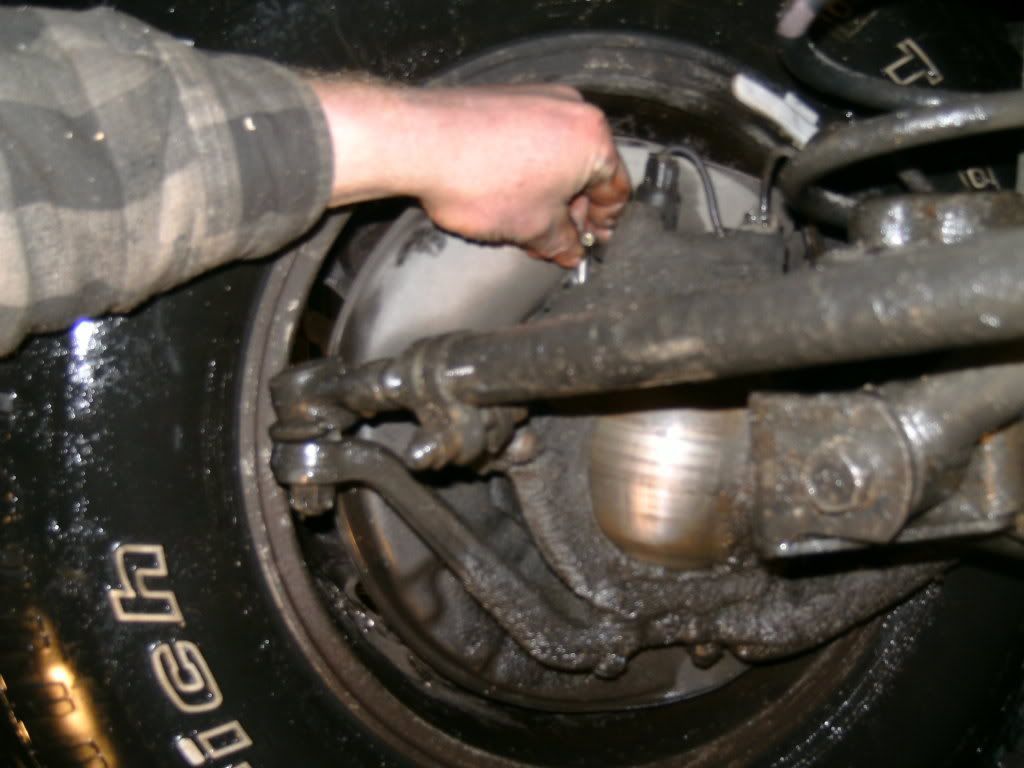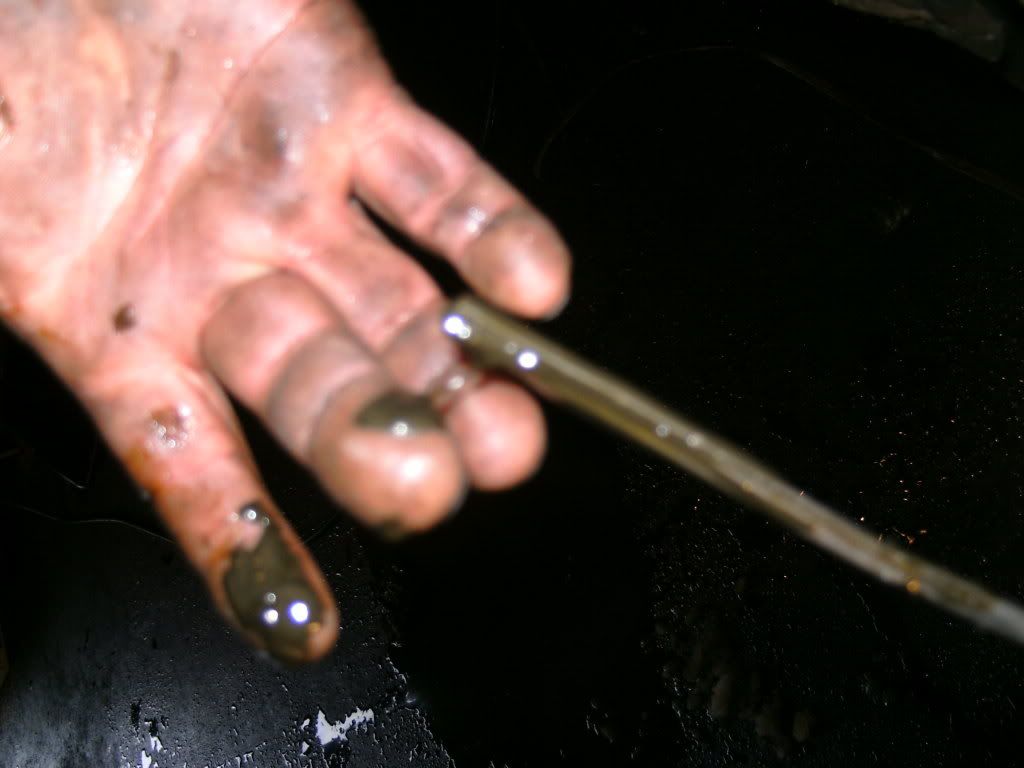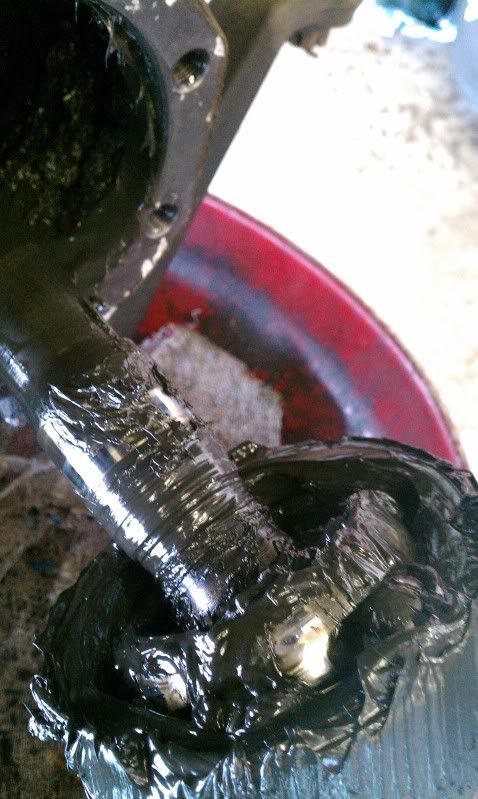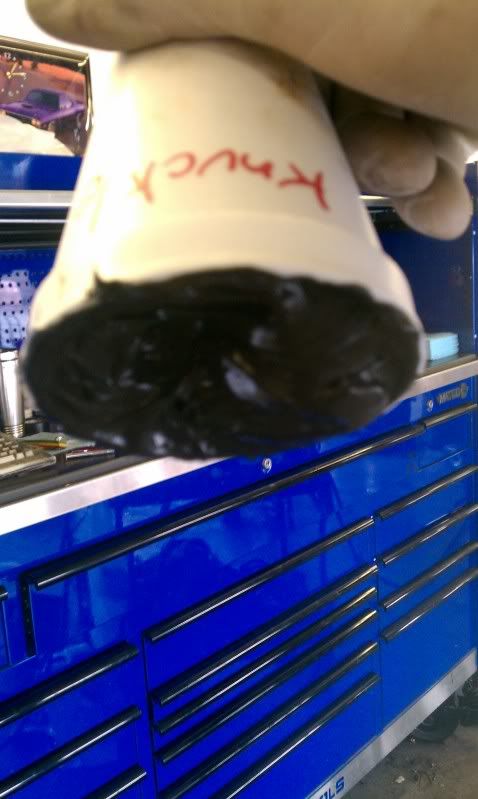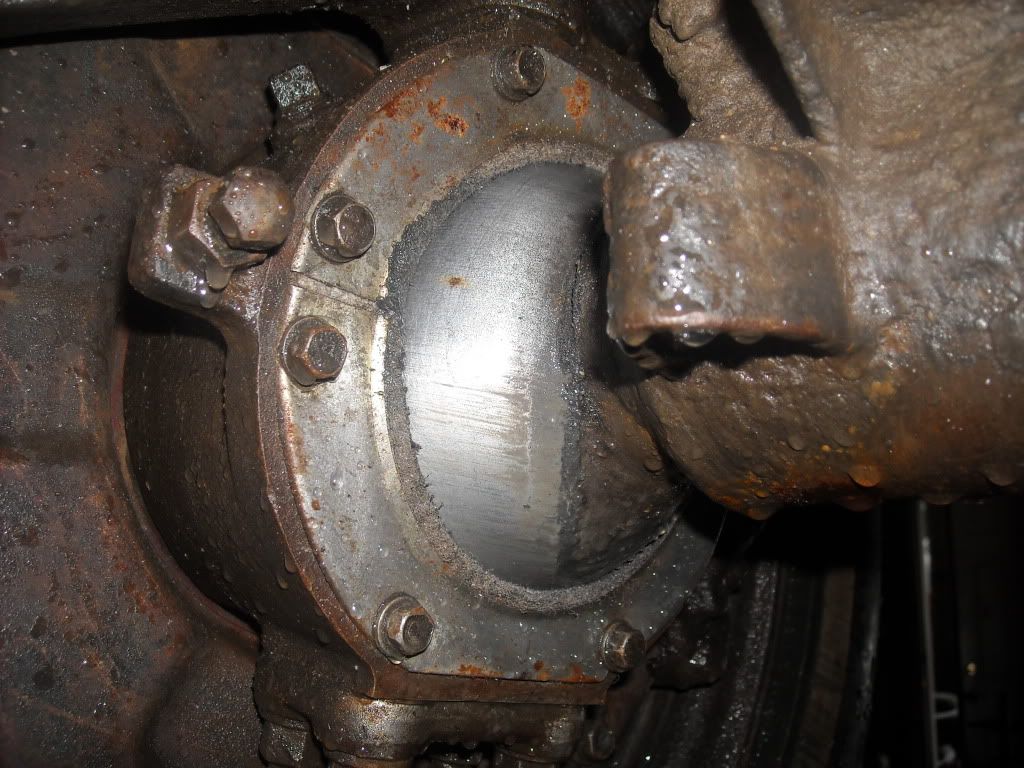The "Light of Bob"
Okay 93 Chewbacca
I will try to sum this up as quickly and as accurately as I can
You have identified what I refer to as a "Master of the Obvious" observation, you want the same grease for the wheel bearings as the knuckle,
In no mechanical assembly are 2 different types of greases used in a part that is not sealed from the 2
Error # 1 in your Toyota FSM
What you need to clear the slate on is one thing,
Grade of grease, which is the #2 Error in your Toyota FSM
Grade of grease in simple laymans terms is the amount of oil in it,
posted is a picture of a Honda axle, a CV shaft, a average CV shaft,
Axle shafts for import vehicles are made by 3 main outfits for all rigs,
GKN NSK or NTN,
Your "birfield" Joint is a NTN, no more no less, In no CV joint application is a #2 grade grease found from production,
always #1 or thinner all the way to a oil, a thick syrup like Oil,
Oil would be the best overall lube for this application,
Oil
So clear the slate with this additive mentioned in the Toyota FSM, it is a smoke and mirror trick,
They use the British English spelling of the additive to baffle you with ,
Forget about it, a wonderful additive found in all sorts of oils and greases,
Now to contain oil in this application is no trouble at the wheel bearings but problematic at the wiper seal,
Manufactures use a "Specialty Fluid" that is #0 grade or thinner,
I have attempted to find any all information about this form of grease, but it is proprietary, Trade Secret, or known as Intellectual property,
In short by reading the Toyota FSM your sent on a wild goose chase, and worse than all that
From what I have learned and read is that the proprietary specialty fluid used in areas that are prone to leakage, is
INCOMPATIBLE with lithium based grease,
The 3rd error in the Toyota FSM
What makes this so completely disgusting is that is not a error, persay
Done intentionally,
Term is Dis information, So As a mechanic working on one of these Toyota axles for the first time, looked at this lube identified it as a form of lube, went to a Toyota dealer and was told this grease was private,
Started studying grease, and #1 the first thing I found out in a hurry is how little I knew, working with it for years, but never being educated about it,
So on your Mud thread, mention "Backwoodsgoop" and you will see and hear the Toyota sales folks come out of the wood work,
Your IH8 Mud show is no more than a online extension of a Toyota dealership, propagating Dis information,
You mentioned Bob is the oil guy could possibly shed some light on this situation,
YES sir, just hope it aint to bright for you,,


